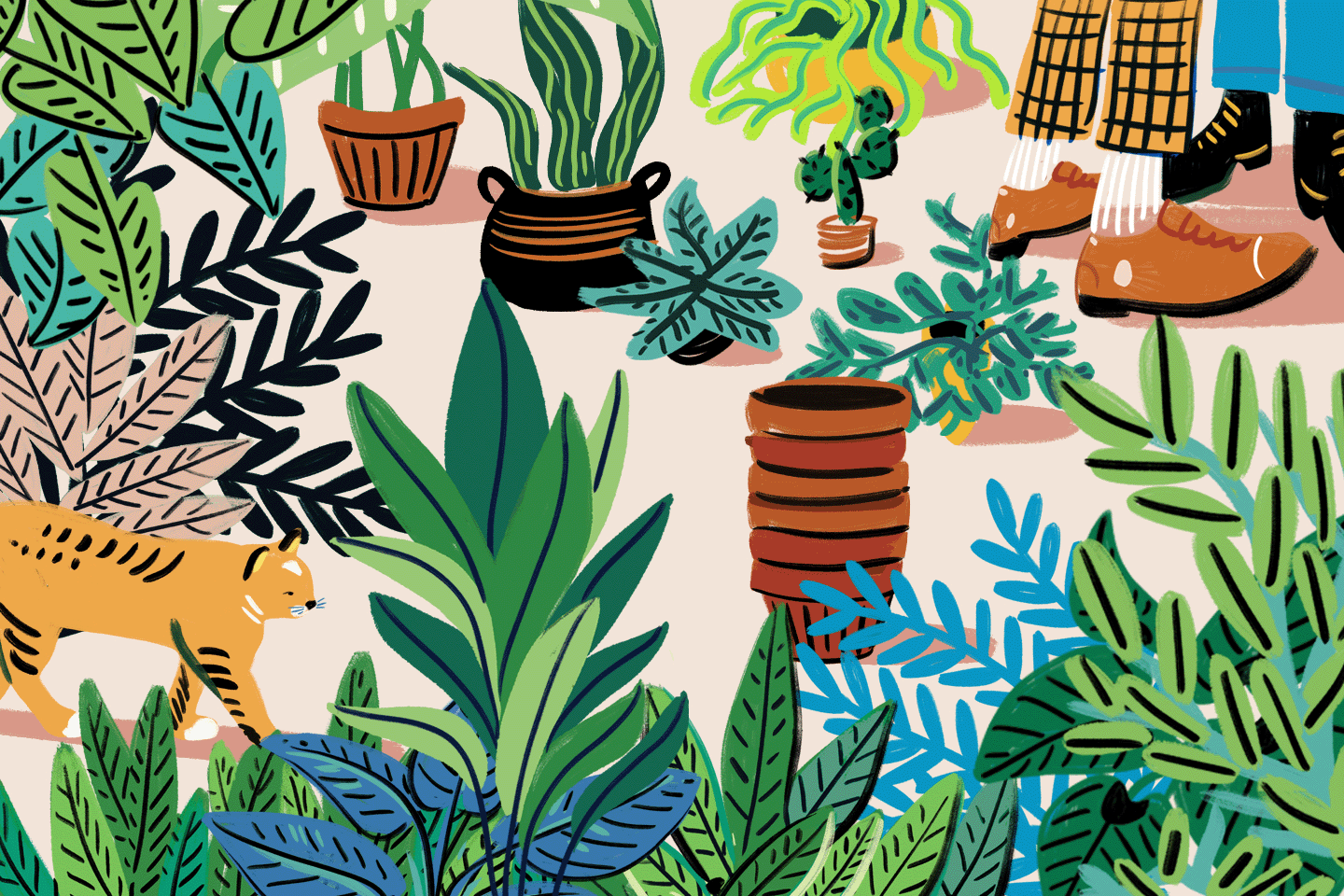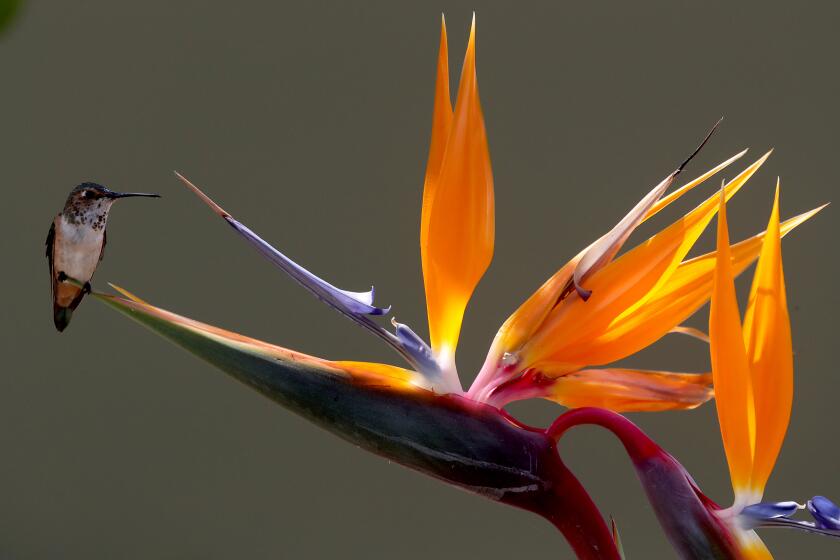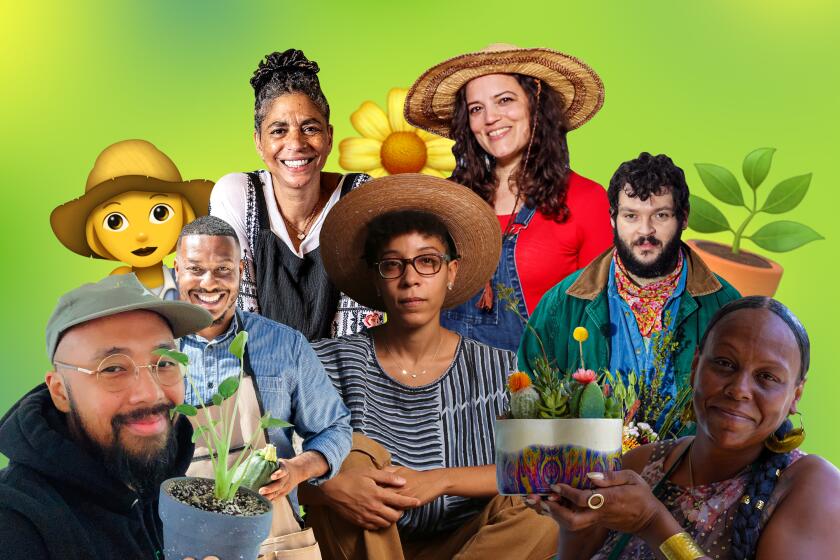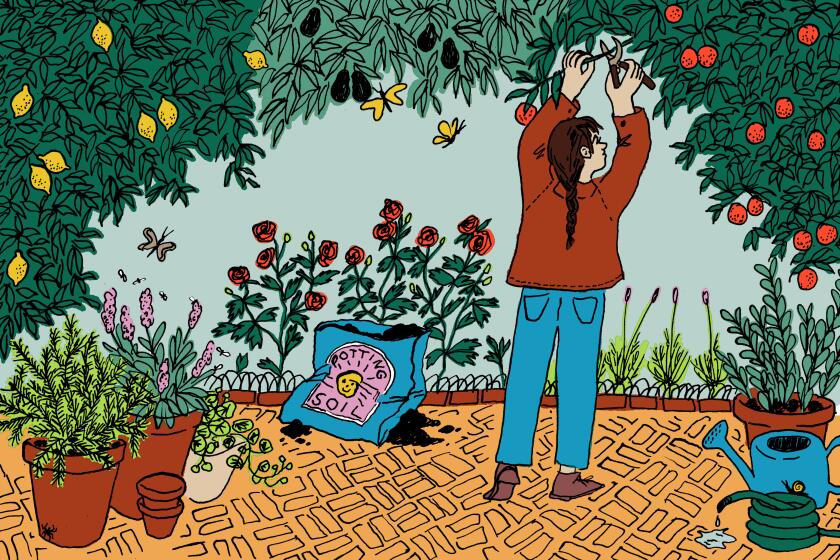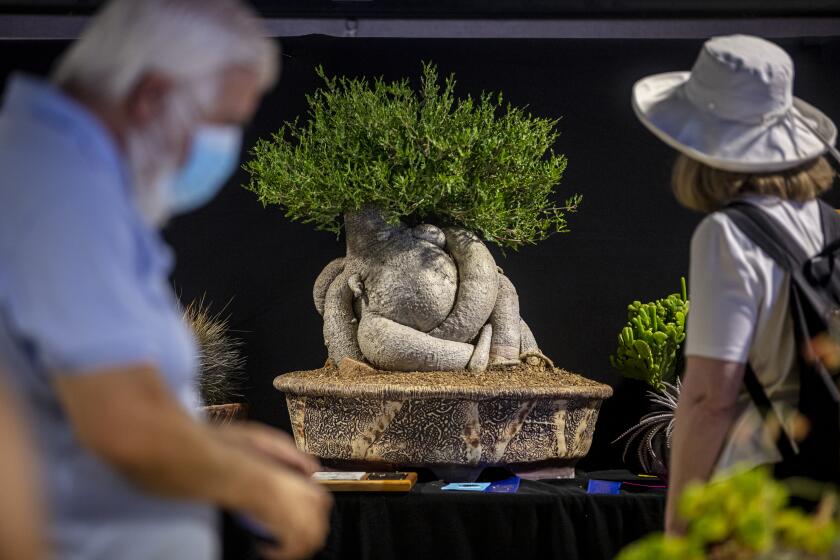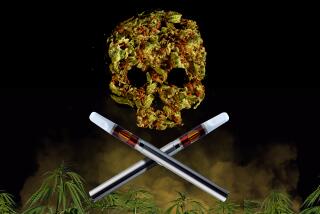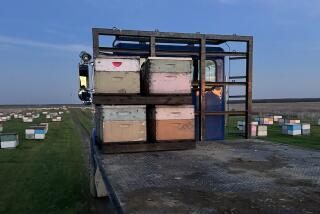What you need to start planting and stop spraying to keep bees healthy and happy
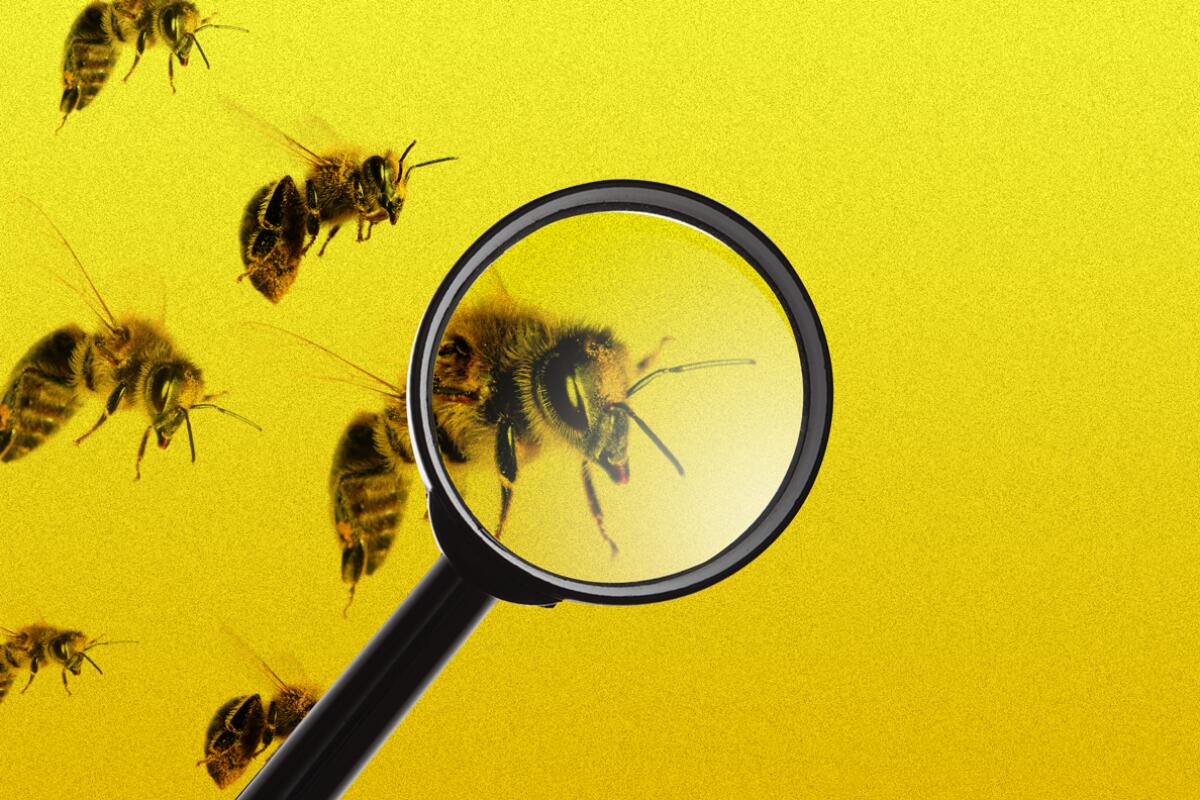
If you care about bees — well, let’s be real: If you care about eating (since bees pollinate the plants that produce our food) — two new studies underscore two simple things home gardeners in and around Los Angeles can do to help those busy buzzers live longer, healthier lives:
1. Lace your yard or balcony with flowers that boost bee immunity and lifespans — such as sunflowers, wild roses, mint, buckwheat and citrus.
And:
2. Stop, just stop, using “neonic” insecticides on your plants.
From tiny storefronts to longtime family-run institutions, we curated this list of our favorite places to shop for houseplants in and around L.A.
Many gardeners have gotten the memo that insecticides hurt bees. But a new study emphasizes how devastating this commonplace insecticide is, even in small doses.
“Neonics” is shorthand for neonicotinoids, said Jake Cecala, whose doctoral research at UC Riverside led to the new findings. Neonicotinoids are insecticides designed to kill a broad spectrum of chewing and sucking insects, from sap suckers like aphids to leaf-chomping beetles.
Problem is, neonics are so good at their job they wipe out all insects, good and bad, for weeks, months and sometimes up to a year, depending on the dosage and plant, said Cecala, who has since moved on to UC Davis, where he is continuing his research. Moreover, most neonics are designed to be systemic, meaning they are absorbed into the entire plant, from its roots and leaves to its flowers and the pollen bees collect and eat. And they are often used by non-organic wholesale growers to keep their young plants bug-free before they go to retail nurseries.
“Essentially, neonicotinoids turn the entire plant into a pesticide,” he said.
There are plenty of things for SoCal plant lovers to do and learn this month, even in the heat of summer.
Cecala’s doctorate research involved studying whether smaller and diluted doses of neonics would be less lethal to bees. And to his surprise, he found using even 5 milligrams per gallon-size plant — less than a third of the recommended dosage of 17 milligrams — killed most of the alfalfa leaf cutter bees in his study group and reduced reproduction by 90% in the few survivors.
And diluting the pesticide with heavy watering didn’t reduce its toxicity either, Cecala said.
“Even when we diluted it, the quantity [of pesticide] was so high it was still devastating to the bees,” he said. “There are alternative insecticides like Neem and various [insecticidal] soaps people can use.
Alfalfa leaf cutter bees are solitary bees used extensively to pollinate alfalfa in North America. Some bees are more tolerant to the pesticide than others, he said, but it’s still toxic to all species, from domesticated honeybees that live in hives to native solitary bees that nest in little holes in the ground.
To celebrate Plant PPL’s first year, we asked 20 plant parents, gardeners and plant shop owners from our L.A. Times series for their best advice for growing happy, healthy plants.
In fact, the results are more devastating to the future of solitary bees, he said, because they live such lonely lives. If several honey bees are killed by the pesticide, the hive will be weakened but likely survive. But with solitary native bees, when one dies, “its whole lineage is wiped out,” he said.
Complicating matters for the home gardener is the fact that many products don’t use the word “neonicotinoids” on their labels, Cecala said. Instead, the pesticide is listed under other tongue-twisting names, such as imidacloprid, clothianidin, thiamethoxam and acetamiprid. To help consumers cut through the confusion, the Center for Food Safety has compiled a long list of products that include neonicotinoids at beyondpesticides.org so gardeners can check whether the insecticide they’re using to kill the aphids on their roses is also rubbing out bees. (For his research, Cecala said he used Marathon 1% Granular.)
And if gardeners are worried about buying plants laced with neonics, Cecala recommends they talk to their nurseries about what pesticides are used by their suppliers. Many native plant nurseries, in particular, are aware of the issues surrounding neonicotinoids, he said.
We found the questions people ask most frequently about gardening and outdoor plants and went to local experts in Southern California to get some answers.
There are arguments to be made for using pesticides to boost productivity in agriculture, but research entomologist Arathi Seshadri of the USDA Agricultural Research Service agency in Davis says it’s hard to justify using them in home gardens when they are so lethal to beneficial bugs.
“If you don’t want chemicals in your home, you don’t want them in your garden,” Seshadri said.
Seshadri said there’s even more damning evidence about neonicotinoids in a study she recently completed on natural compounds in flowers that are beneficial to bees. Her research indicated that when the neonics mix with the natural compounds in the flowers, it seems to strengthen the toxicity of the pesticide, she said.
Ironically, without the addition of the pesticide, Seshadri’s research in another study found that four of those naturally occurring compounds actually help improve bee health, specifically their gut microbes, making them more resistant to diseases such as Nosema ceranae, a common pathogen that causes diarrhea in honey bees and ultimately can kill off an entire weakened colony.
There were 118 exhibitors showing 1,300 strange and wonderful plants as the 35th Inter-city Succulent and Cactus Show and Sale made up for a lost year this past weekend.
“The gut microbes in bees and humans are important for our immune response and longevity,” she said. “So if you want to help the bees, you should plant these flowers in your yard, because having these kinds of flowers can actually provide bees with a way to strengthen their gut microbes and fight off diseases.”
The four naturally occurring compounds that provide these kind of “bee vitamins” are:
Gallic acid: Found in mint, raspberry, apples and sunflowers.
Kaempferol: Found in petunias, aster, canola (a.k.a. mustard seed) and poppies
P-coumaric acid: Found in buckwheat, wild roses and clover.
Caffeine: Probably the single most helpful compound for improving bee gut health, Seshadri said, and found in the pollen of flowers on citrus plants, and in, of course, coffee plants. (Seshadri cautioned that people shouldn’t try to feed their bees coffee thinking that extra caffeine will make them healthier. The amount of caffeine found in lemon blossom pollen, for instance, is tiny compared with the amount found in a cup of coffee or coffee grounds, which would be toxic to bees.)
Best to just plant as many of these flowers as you can and let the bees sip as they want in the doses provided by Mother Nature, she said.
And a couple of important notes about which flowers to plant:
— Choose varieties that contain pollen, because some varieties have been bred for looks rather than bee food, she said. For instance, double petunias are pretty but they don’t attract bees because they don’t have pollen. The same with many newer rose varieties. If in doubt, stick your finger in the flower’s center and swish it around. If it comes out golden, then it has pollen; otherwise, the bees won’t be interested.
— Canola, or mustard seed, may grow wild as a weed, but it is a good plant to grow around the edges of other crops to draw in bees, she said.
And don’t be afraid to mix clover with your lawn. “It’s technically classified as a noxious weed,” she said, “but beekeepers know [sweet] clover is actually very beneficial to the bees, and it helps improve the lawn too.”
More to Read
Sign up for The Wild
We’ll help you find the best places to hike, bike and run, as well as the perfect silent spots for meditation and yoga.
You may occasionally receive promotional content from the Los Angeles Times.
